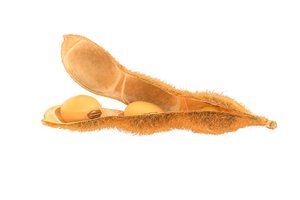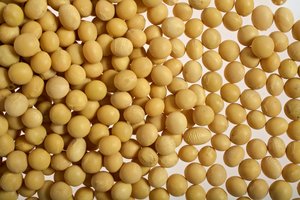Free from soya lecithin/protein
Intolerance symptoms
The symptoms can occur a few minutes to hours after eating the triggering food. Hypersensitivity to soy is relatively common, but a pronounced soy allergy is rare. Typical symptoms are:
- Reddened, swollen and itchy mucous membrane in the mouth, the so-called oral allergy syndrome.
- Gastrointestinal symptoms such as nausea and abdominal pain may occur after consumption.
- Skin: An allergic reaction may manifest as an itchy rash and hives.
If the reaction is severe, breathing difficulties and dizziness may occur. The diagnosis is often made on the basis of the symptoms described after consumption. It is often helpful for sufferers to keep a nutrition diary of the foods they have eaten and the symptoms they experience afterwards. Allergy tests and blood tests can also be carried out by the doctor - a provocation test can be decisive here, however.

Products with this label are made without soya lecithin/soy protein.
What are lecithins?
Lecithins (from the Greek lekithos "yolk") is the classical name for a group of chemical compounds called phosphatidylcholines. These are phospholipids composed of fatty acids, glycerol, phosphoric acid and choline. Lecithins are components of the cell membrane of animal and plant organisms. However, they do not occur in the membranes of most bacteria. They are accompanying substances in fats and oils and are particularly abundant in egg yolks and cells of plant seeds.

Lecithins allow the emulsification (mixing) of fats and water and are thus important natural surfactants (emulsifiers) for food and feed. Lecithins are approved in the EU as a food additive (E 322) for food (also for "organic products") with a maximum quantity restriction only for baby food. On ingredient lists they are listed as lecithin, soya lecithin or E 322. They are also used as an active ingredient in medicine and cosmetics, and as a food supplement in dietetics.
Depending on their sources, technically obtained lecithin products, such as extracts from soybeans or eggs, also contain other phospholipids as well as sphingomyelins and glycolipids. These substance groups also have similar physical properties and are emulsifiers. The proportion of polar lipids (insoluble in acetone) in lecithin products must be at least 60 % according to an EU directive.
Further information: Wikipedia "Lecithin"
